

Moldova

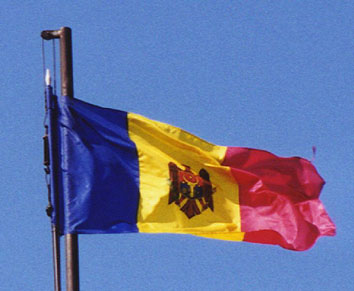
the flag

the country
Moldova, republic in southeastern Europe, bordered on the north, east,
and south by Ukraine and on the west by Romania. In Moldovan, the official
language, the country’s official name is Republica Moldova. Moldovans
are the largest ethnic group in Moldova, although other ethnic groups constitute
a majority in some regions. Kishinev is the country’s capital and largest
city.
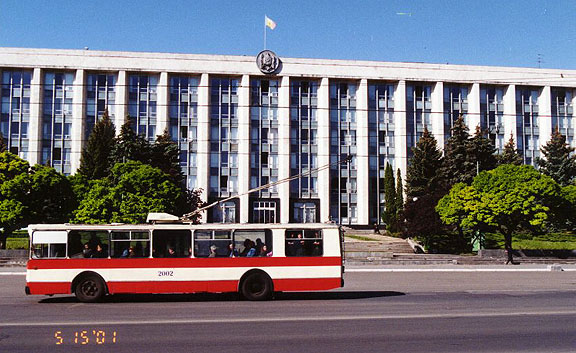
government building
Present-day Moldova corresponds generally to the historic region of Bessarabia
(Bessarabiya). In 1940 Bessarabia was annexed to the Union of Soviet Socialist
Republics (USSR) and designated the Moldavian Soviet Socialist Republic (SSR).
Moldova (no longer known by the Russian variant Moldavia) became an independent
country in 1991.
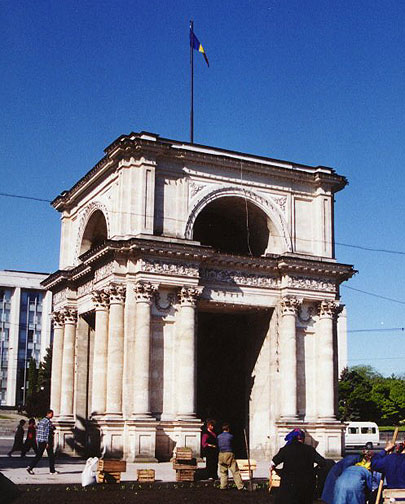
Arc de Triomphe 1846
At the end of that year, it signed the agreement establishing the Commonwealth of Independent States (CIS), an organization composed of former Soviet republics. Moldova became a formal member of the CIS in 1994. That year the country adopted its first post-Soviet constitution. In the early 1990s secessionist movements among certain ethnic groups took hold in the Trans-Dniester region in the extreme east and the Gagauz region in the south. The threat to Moldova’s territorial integrity was largely resolved by the mid-1990s.
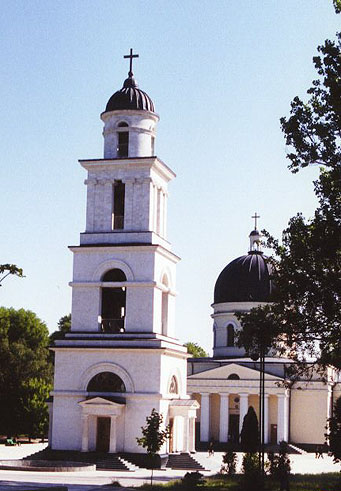
Orthodox Cathedral
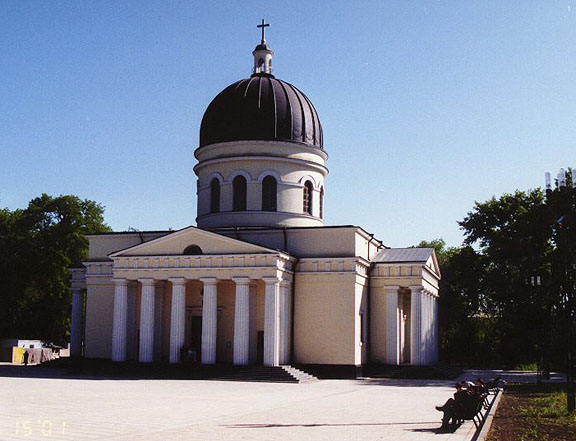
Moldova is a landlocked country that covers an area of about 33,700 sq km (about 13,000 sq mi). It was the second smallest republic of the former USSR, after Armenia. The terrain of Moldova is primarily a hilly plain interspersed with deep river valleys. The average elevation is 147 m (482 ft) above sea level. The Kodry Hills occupy the central portion of Moldova, rising to a maximum elevation of about 430 m (about 1410 ft).

planting the spring flowers
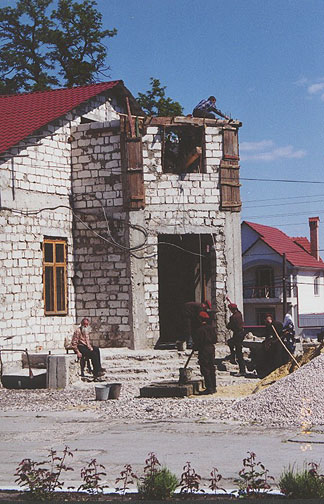
rebuilding
Moldova contains an extensive river system; more than 3000 rivers and streams traverse the country. The two largest rivers are the Dniester and the Prut, both of which rise in the Carpathian Mountains in Ukraine, to the north of Moldova. The Dniester, the larger of the two rivers, flows through the eastern portion of Moldova in a southeasterly direction. It forms part of the country’s border with Ukraine in the northeast, cuts through Moldova’s interior, and meets the Ukrainian border again in the southeast, where it reenters Ukraine and then empties into the Black Sea. The Prut, a major tributary of the Danube River, forms Moldova’s entire western border with Romania. At the extreme southern tip of Moldova, the Prut joins the Danube, which flows eastward and empties into the Black Sea. Other major rivers include the Yalpug, the Byk, and the Reut.
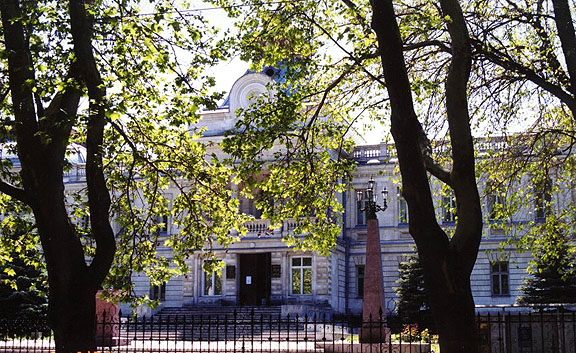
The National Museum
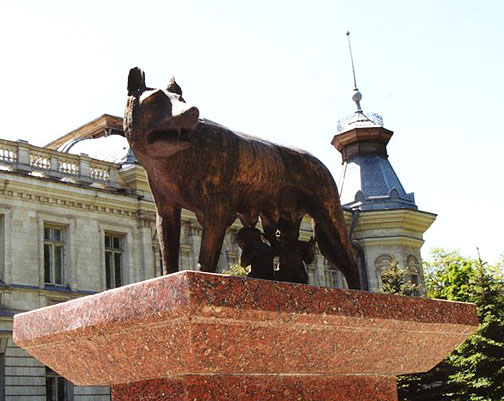
Statue to
Romulus
(nourished by the wolf, Lupoaica Romei)
The hills in the central portion of Moldova are densely forested, mostly with oak and hornbeam trees. Linden, maple, beech, and wild fruit trees also grow in Moldova. Cultivated crops have largely replaced the natural grass cover of the plains, or steppes, in northern and southern Moldova. Grassy salt marshes are common in some river valleys.
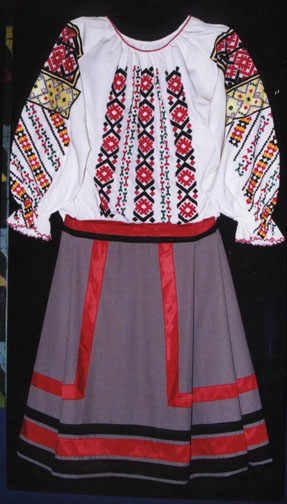
a national costume
A wide variety of wildlife inhabits Moldova, although the population of certain animals, such as wolves, has declined dramatically during the last century. Roe deer, which are native to the region, are abundant. The spotted deer, which was introduced to Moldova, is also well established. Members of the weasel family, including badgers, martens, ermines, and polecats, are common. Other mammals include wild boars, foxes, and hares. Common birds include larks, jays, and blackbirds. Some species, such as the wild goose, are migratory.
Natural resources in Moldova include deposits of lignite, phosphorite, and gypsum. Three-quarters of the country is covered in chernozem, an exceptionally fertile type of soil that is ideal for agriculture.

wine
tasting
(a Moldovan tradition)
Photos of Moldovan Wine Producer
Moldova’s climate is continental, with conditions modified somewhat by the Black Sea. Winters are fairly mild, with average daily temperatures in January ranging from -5° to -3° C (23° to 27° F). Summers are quite warm, with average daily temperatures in July generally exceeding 20° C (68° F) and daily highs occasionally reaching 40° C (104° F). Precipitation is fairly light and irregular and occurs least in the south, where it averages 350 mm (14 in) per year. Precipitation is greatest in the higher elevation areas, where it can exceed 600 mm (20 in) per year. Moldova’s climate is conducive to agriculture, especially grape growing.
The environment of Moldova suffered extreme degradation during the Soviet period, when industrial and agricultural development proceeded without regard for environmental protection. Excessive use of pesticides resulted in heavily polluted topsoil, and industries lacked emission controls. The Moldovan government is now burdened with the Soviet legacy of ecological mismanagement. Environmental initiatives are administered by the State Department for Environmental Protection.
![]()
![]()